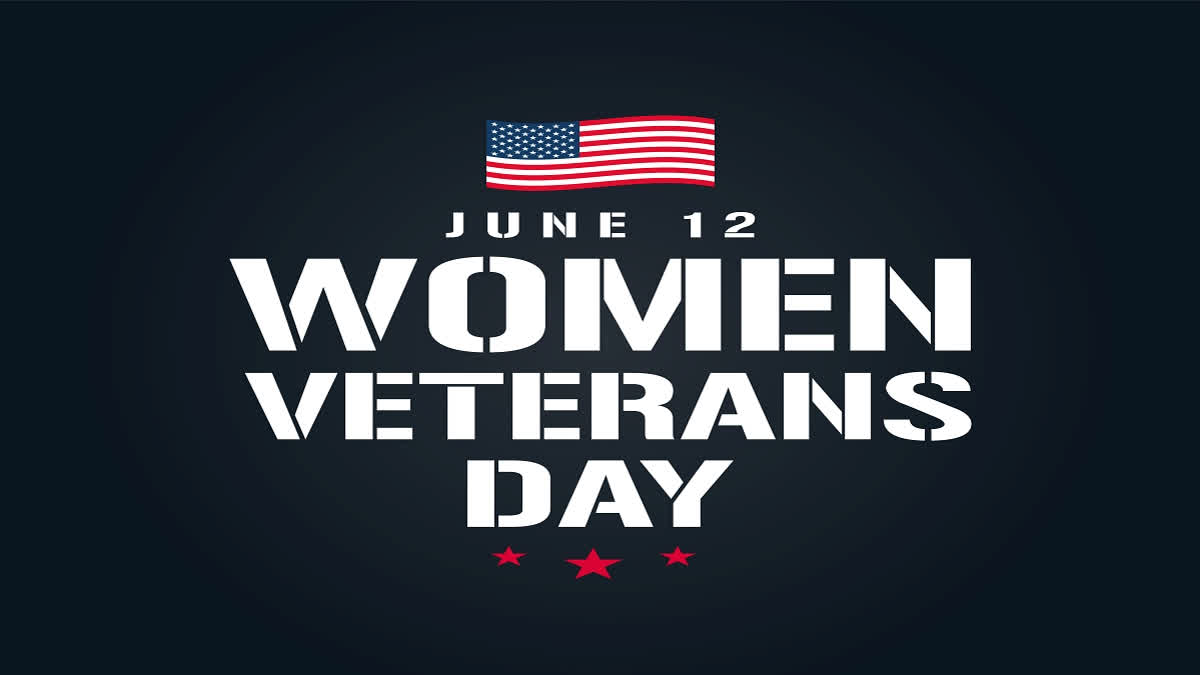Hyderabad/New Delhi: Women Veterans Day is celebrated every year on June 12 to highlight the crucial role of women, who have served in America's Armed Forces throughout United States history.
Taking to social media X, Charity Grimm Krupa posted, "The 2024 Women Veterans Day Commemoration was held today at the Capitol where we celebrated our female heroes from across the Commonwealth. I was very happy to welcome one of our own women heroes from the 51th District –Staff Sergeant Jamie Means-Lambie. Jamie was accompanied by her father and fellow veteran, retired Wharton Township Supervisor Jim Means."
This day has been chosen to mark the anniversary of the Women's Armed Services Integration Act that was signed by President Harry S Truman on June 12, 1948. Earlier to this, women nurses could serve in the regular and reserve forces during normal periods.
With an aim to ensure that women veterans receive their due respect, recognition, and respectable treatment that they deserve, the day is celebrated annually. The date was first recognised when the New York State Assembly declared June 12, 2008, to be Women Veterans Recognition Day.
The day is celebrated to acknowledge as an effort to honour the work of veterans women in the United States Armed Forces and recognise their commitment that they have served. The women have a glorious history of valour where they have performed in several wars even though they continue to serve in it nowadays. A large number of women are in active duty in the army on different ranks from officer to soldier.
The perception toward women has changed across the globe as they are not behind any man in the modern era. They are joining the military and taking responsibility for combat duties like male soldiers.
A World wide glance of Women in Combat Roles
USA: The doors began opening for women seeking a career in military service. Beginning in 1976,women were admitted to all service academies. Basic training became integrated in 1977. A separatebranch for women was no longer necessary, so Congress disbanded the Women Army Corps in 1978. The Department of Defense opened all combat jobs to women in 2015.
Canada: Canada military is about 85 per cent men, but women have been allowed in combat since 1989. Women comprise close to 15 per cent of the Canadian fighting force -- its regular force and primary reserves. The number of women in combat roles remains small and, according to the UK study, Canadian research suggests women are more likely to serve in supportive rather than operational roles.
France: In France, although women can serve in combat and overall women represent about 19 per cent of all French military personnel, very few women actually serve on the front lines.
Germany: In Germany, women began joining combat units in 2001 after the European Court of Justice ruled that preventing women from such jobs was against gender equality principles. Women can choose any military career they want, including elite groups such as marine commandos. The number of women in the German armed forces tripled between 2001 and 2014, with about 800 women in combat units, including many who have served in the Afghanistan war.
Denmark: Women have been allowed in all ranks in the Danish military since 1998. Women perform as well as men in land combat roles, according to some Danish research, and both genders are required to meet the same physical standards in jobs that are more physically demanding. Danish women have served in combat in Afghanistan.
Israel: Women have been allowed in close combat roles since the 1990s, and women are eligible for 90 per cent of all defense roles.
The Netherlands: Women are not allowed in the Marine Corps or Submarine Service, but can apply for other combat ready positions. But the number of women who go for combat roles is not large. Men tend to serve those roles twice as often as women. The UK study that examined women in foreign fighting forces reported that the Netherlands armed forces benefit from teams comprised of men and women when it comes to crisis-response operations and peacekeeping missions.
New Zealand: Women have been allowed since 2001 in every job in the armed forces, including the infantry. But that openness has not translated into a high number of women in combat roles.
Poland: Women are allowed in all services, and since 2004, the nation has required women with college nursing or veterinary degrees to register for compulsory military service. But that is a lot of change in a relatively short amount of time. It wasn't until 1999 that women were accepted into military schools and not until 2003 did female graduates complete four-year training at those schools and assume posts.
Sweden: Since 1989 there have been no gender restrictions in the Swedish military. Swedes say having women in combat roles, particularly those who have served in Afghanistan, has been positive for operations.
Australia: The country opened combat positions to women in September 2011, allowing them join special operations units in Afghanistan and the general infantry and armored units. Women are also allowed to become naval divers. Australia former Prime Minister Julia Gillard, the first woman in that position, backed the move.
Norway: In 1985, Norway became the first country in NATO to allow women to serve in all combat capacities, including submarines. Norwegian women are also subject to the draft in the event of a national mobilisation.



